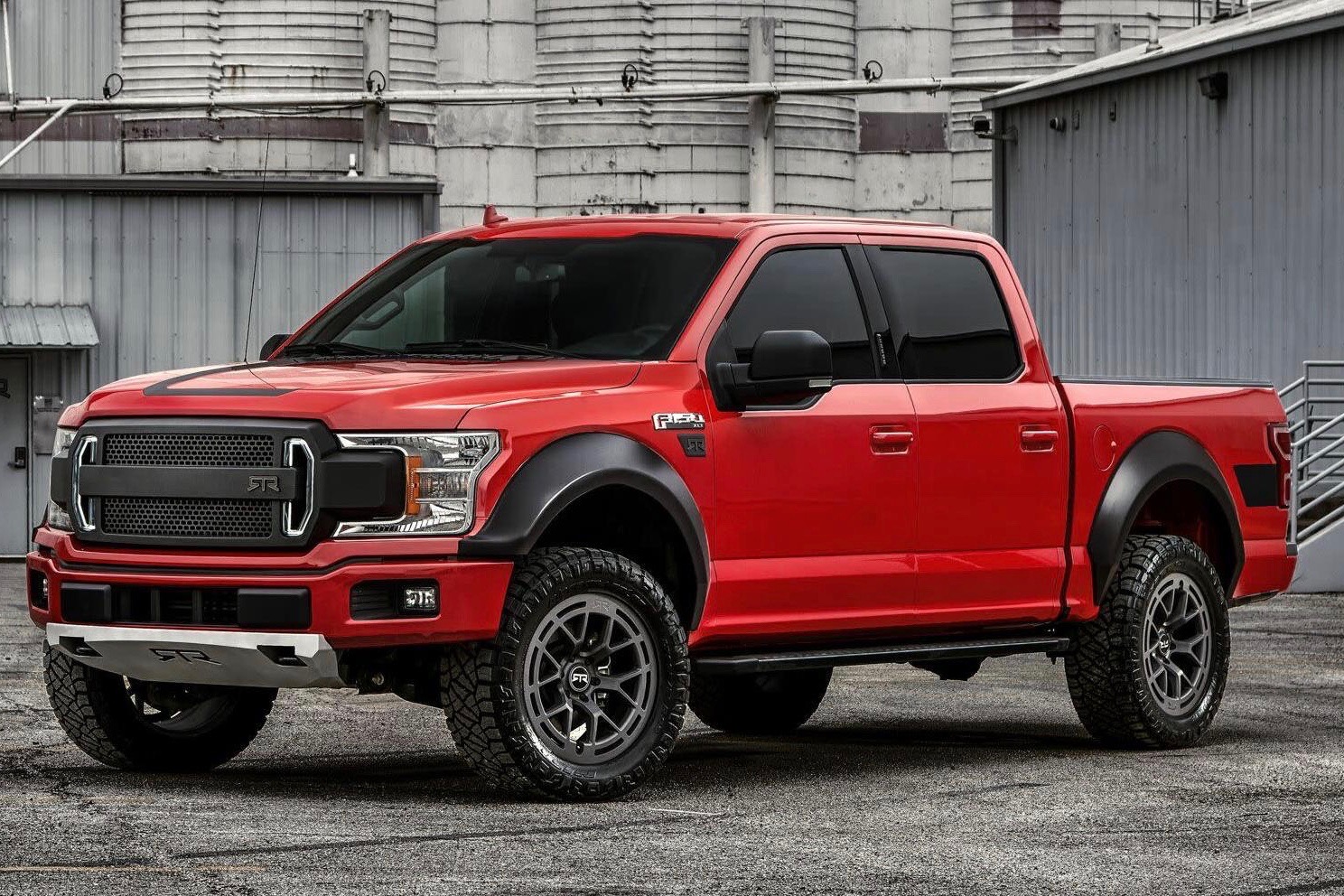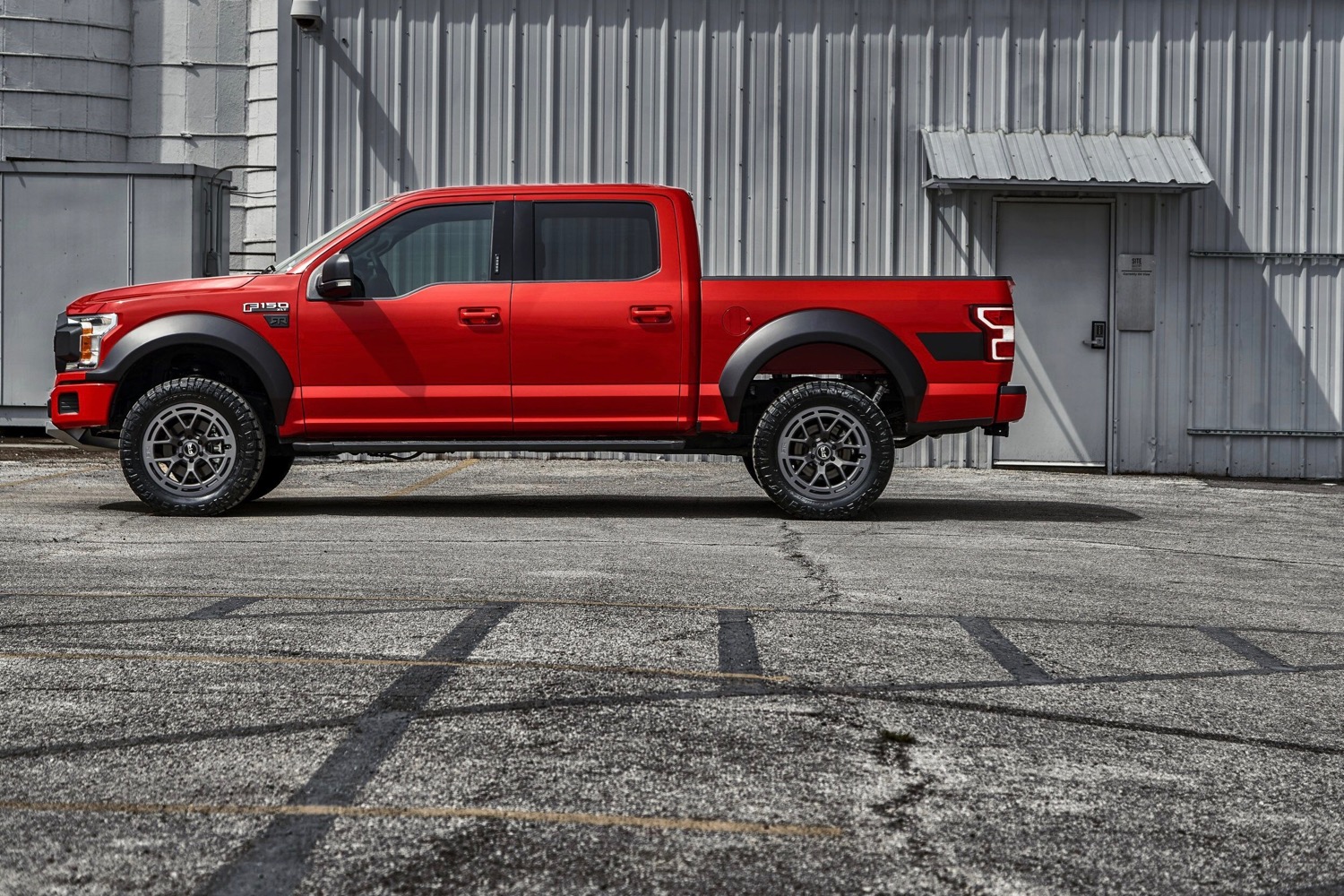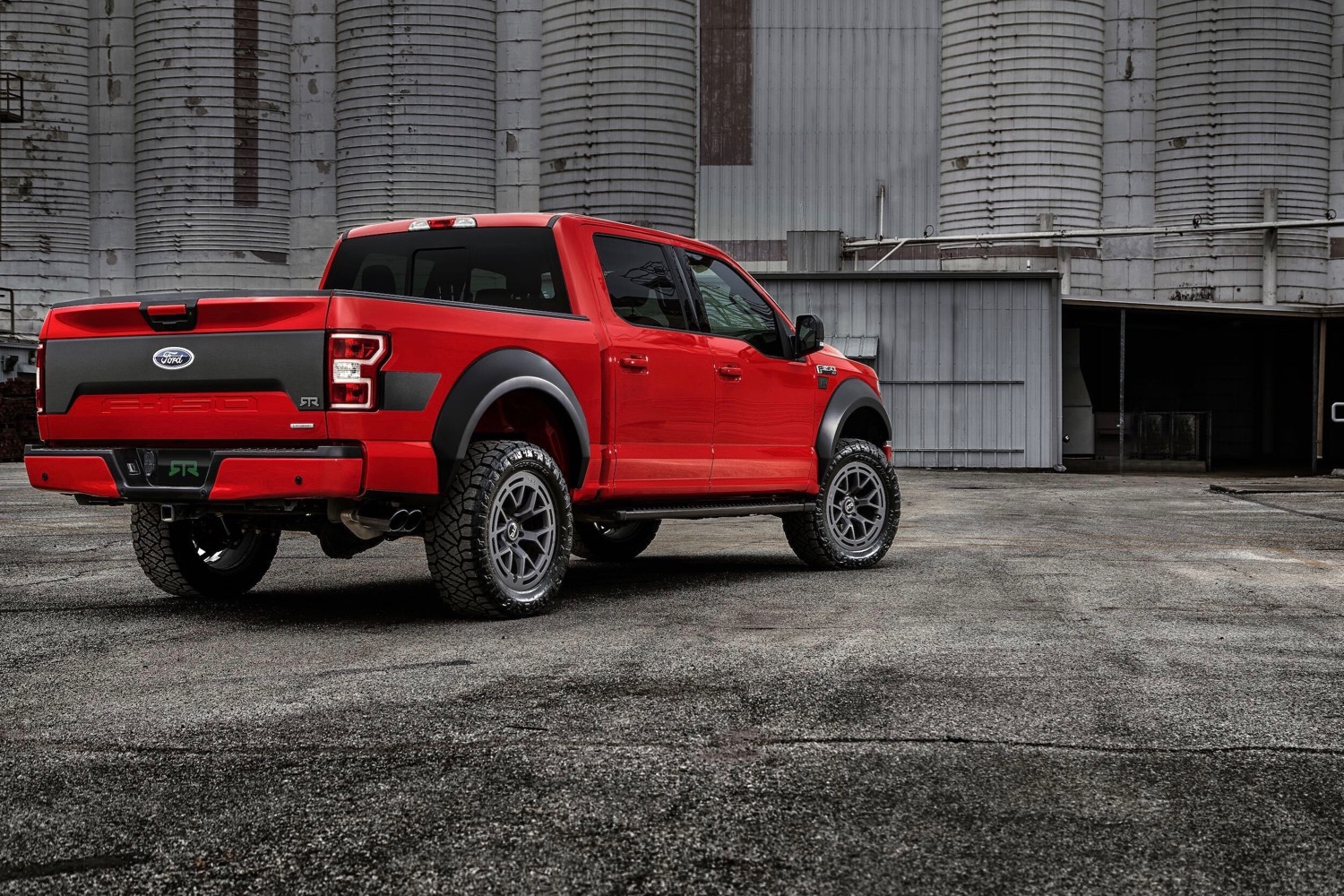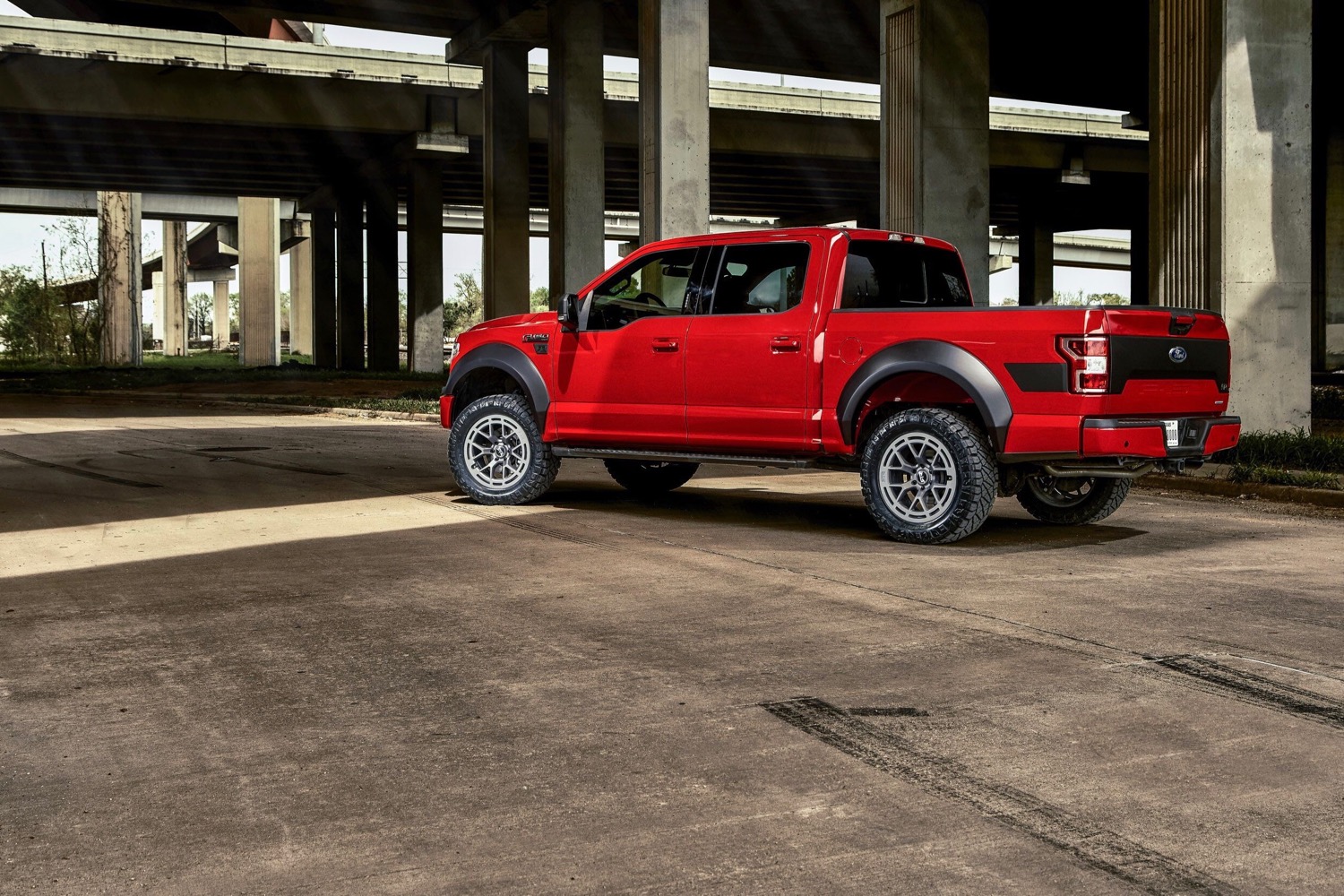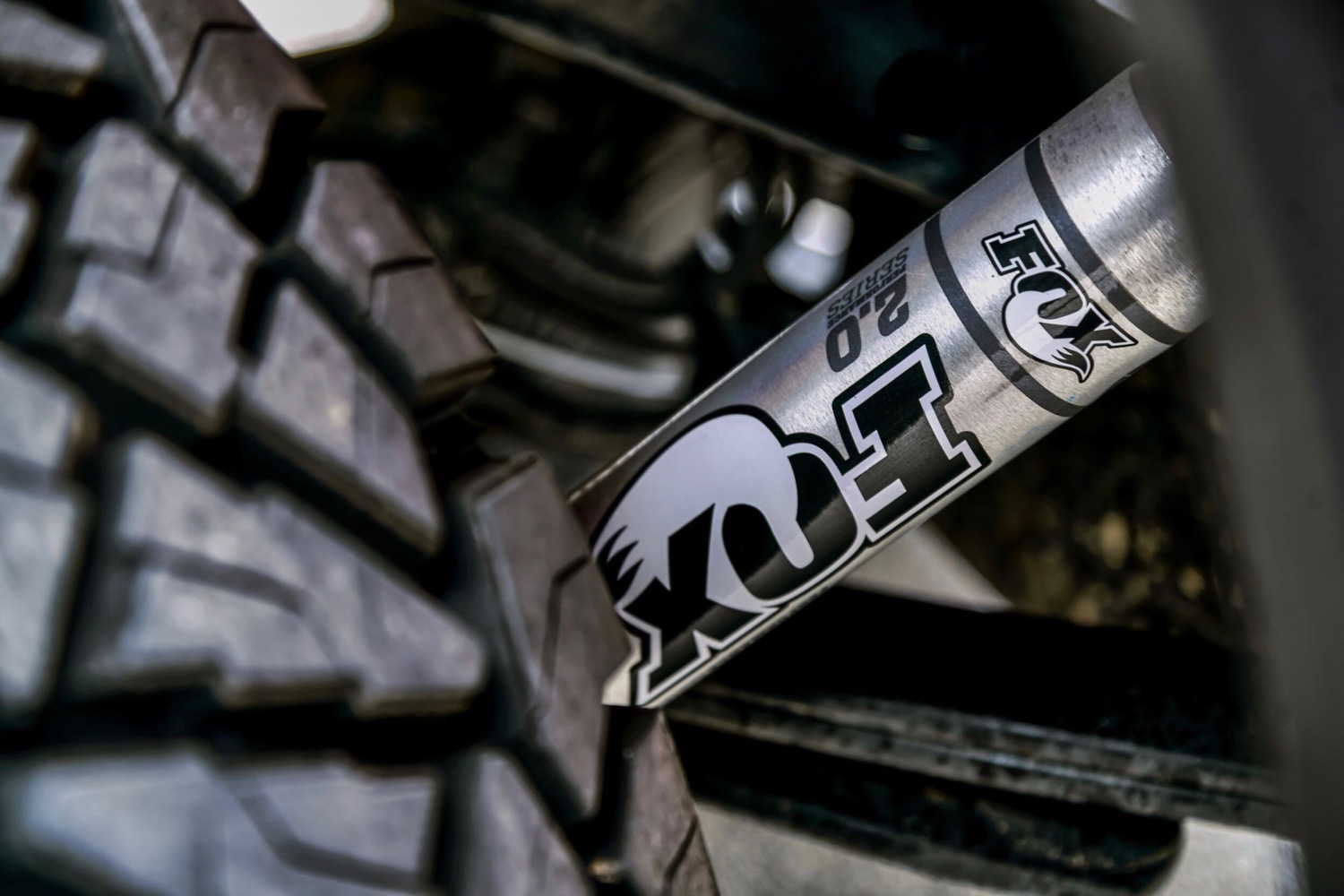RTR Vehicles is an aftermarket company run by pro drifter Vaughn Gittin Jr. that specializes in making Fords cooler. RTR (short for “ready to rock”) started out with the Mustang, but now it’s turning its attention to the Ford F-150 pickup truck. The result won’t trouble Ford’s own F-150 Raptor, but it does add some off-road capability to the Blue Oval’s bestseller.
The RTR upgrade package is available on any four-door F-150 except the Raptor, which really doesn’t need it, anyway. Trucks get Fox Series 2.0 shocks, 20-inch wheels shod in Nitto Grappler tires, and a skid plate to improve off-road prowess. What they don’t get is a power upgrade. However, RTR offers a cat-back exhaust system for trucks equipped with the 5.0-liter V8 or 2.7-liter and 3.5-liter EcoBoost V6 engines. These relatively mild upgrades don’t take the F-150 to new extremes, but they do create a suitable rival to the Chevrolet Silverado 1500 Trailboss or Ram 1500 Rebel. If you want more power from your F-150, plenty of other companies are eager to help.
The F-150 also gets a new grille with RTR’s signature LED running lights, as seen on the company’s tuned Mustangs and Gittin Jr.’s Mustang drift cars. Black plastic fender flares complete the major modifications. Customers can also specify a graphics package if they want to stand out more. The interior is mostly stock, except for RTR floor liners and a dashboard plaque signed by Gittin Jr.
The RTR upgrade package adds $12,750 to the price of a 2019 Ford F-150. RTR may be an aftermarket company, but it has a partnership with Ford that allows it to sell vehicles through Ford dealerships. It also means RTR-modified vehicles keep their Ford warranty coverage, providing extra peace of mind for owners.
The F-150 has been the United States’ bestselling vehicle for decades, and it’s proven popular with tuners as well. In addition to RTR, companies like Roush and Shelby American have put their own spins on the ubiquitous truck. Hennessey even built a six-wheeled version of the F-150 Raptor. It will be interesting to see if that enthusiasm transitions to the hybrid and all-electric versions of the F-150 that Ford is working on.
Editors' Recommendations
- Ford is only making 2,000 of these matte black F-150 Lightnings. Here’s your first look
- Ford halts reservations for its all-electric F-150 Lightning pickup
- 2022 Ford F-150 Lightning: America’s bestselling vehicle goes electric
- 2021 Ford F-150 hybrid first drive review: Tech can be tough
- 2021 Tesla Cybertruck vs. 2021 Ford F-150
